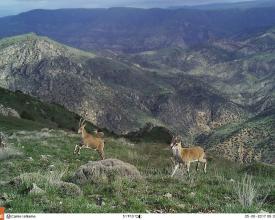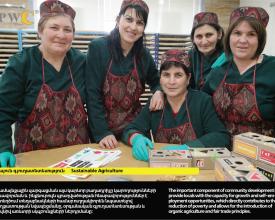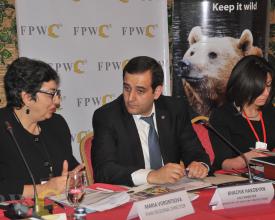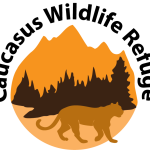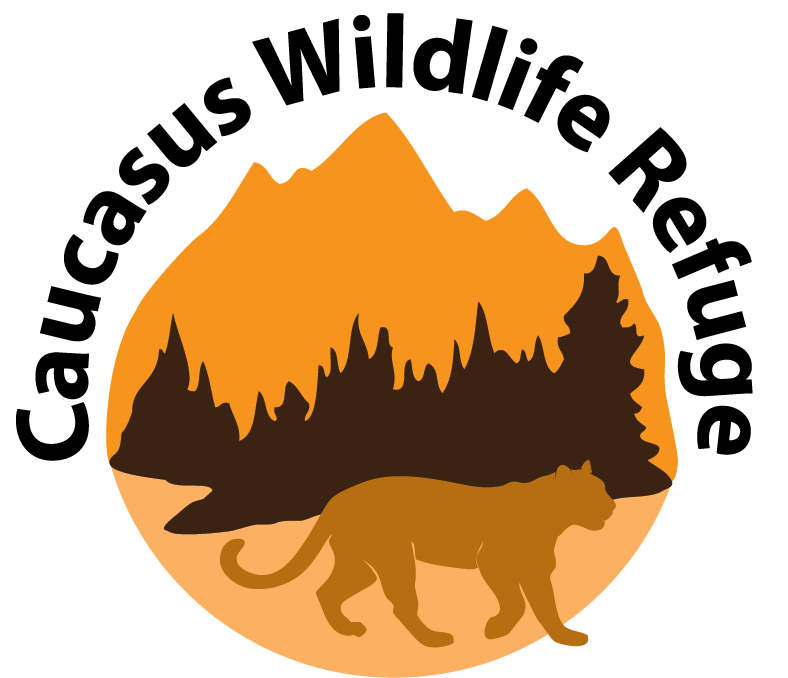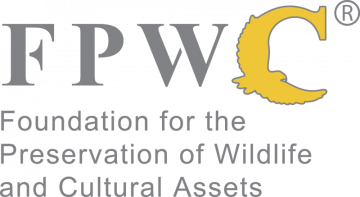
Refugio de Fauna del Cáucaso: Conservación privada pionera en Armenia
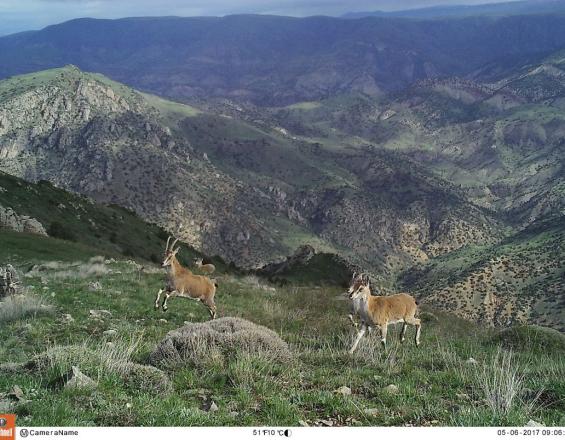
El Refugio de Vida Silvestre del Cáucaso es una zona protegida privada gestionada por el FPWC. El refugio, que ha pasado de 400 a 20000 hectáreas desde 2010, se extiende a lo largo de la frontera de la Reserva Natural Estatal del Bosque de Khosrov (categoría Ia de la UICN). El objetivo general del CWR es contribuir a una protección eficaz de la biodiversidad en Armenia mejorando las medidas de conservación en las zonas tampón y los corredores de migración de la fauna silvestre de la reserva, anteriormente gestionados de forma insostenible. Para ello se interrelacionan el desarrollo sostenible de la comunidad, la conservación y el cambio de comportamiento.
La FPWC mantiene en la zona un puesto de guardabosques con dotación permanente (6 guardabosques son empleados de la comunidad), que está suficientemente equipado para proteger el territorio contra cualquier impacto humano negativo. Los guardabosques patrullan las 8.000 hectáreas en un régimen de 24 horas al día, 7 días a la semana, impidiendo cualquier actividad ilegal en la zona, además de vigilar a los animales aplicando las tecnologías más modernas. El CWR es el único proyecto de este tipo en todo el Cáucaso Sur.
Contexto
Défis à relever
El estado actual de las prácticas de conservación en Armenia es el resultado de décadas de asignaciones de tierras, políticas y gestión. Las leyes, códigos y políticas forestales actuales han sido casi idénticas a sus homólogas del periodo soviético. Declaran que todas las reservas son propiedad del Estado y deben ser gestionadas únicamente por él. El cumplimiento y la aplicación de las leyes y políticas son muy débiles e irresolutos. La revisión y modernización de las leyes y políticas medioambientales ha recibido escasa prioridad en la legislatura armenia.
Especialmente en los primeros años de trabajo, hemos tenido que lidiar continuamente con la reticencia a colaborar de las comunidades rurales, causada por la desconfianza y la escasa comprensión de cómo pueden contribuir a la conservación. Esta mentalidad se debe a décadas de distanciamiento de la participación activa en la protección y gestión de las reservas naturales.
La caza ilegal, la tala ilegal y el pastoreo no regulado siguen siendo un reto.
Ubicación
Procesar
Resumen del proceso
En curso.
Bloques de construcción
Regenerar comunidades sostenibles
Durante el periodo soviético y después de la independencia, la sociedad armenia en general y las comunidades rurales en particular se han visto continuamente disuadidas de asumir un papel activo en la protección y gestión de las reservas naturales.
Reconociendo la urgente necesidad de que las comunidades que viven en torno a las áreas protegidas participen activamente en la conservación de los recursos de los que dependen y se beneficien de ella, el FPWC, desde 2006, ha contribuido sistemáticamente al desarrollo medioambiental, social, económico y cultural de las comunidades, refiriéndose así a las cuatro dimensiones de la sostenibilidad.
El proyecto de desarrollo comunitario promueve una nueva estrategia de desarrollo sostenible para las aldeas de toda Armenia, con especial atención a las zonas adyacentes a la RTC.
Su objetivo es mejorar los medios de subsistencia de la población rural y fomentar el desarrollo rural sostenible como enfoque holístico. Esta estrategia vincula las mejoras económicas y de infraestructuras con la conservación de la naturaleza y la protección del medio ambiente, ofreciendo a los habitantes de aldeas remotas incentivos y oportunidades de obtener ingresos mediante el uso/la gestión sostenible de los recursos naturales.
Factores facilitadores
Ganarse la confianza de las comunidades gracias a los efectos positivos demostrados es un factor clave. Paralelamente al trabajo de conservación, la FPWC ha introducido soluciones de energía renovable en docenas de comunidades, ha construido y renovado infraestructuras de agua potable y de riego, ha desarrollado capacidades y ha creado oportunidades de empleo e ingresos para las comunidades. Todo ello ha contribuido enormemente a fomentar la confianza en el trabajo de conservación de la FPWC, la voluntad de aprender, comprender y contribuir, la compasión y la solidaridad.
Lección aprendida
La desconfianza y la resistencia generadas por factores como el papel del gobierno como único propietario de las reservas naturales, la administración centralizada, la falta de consideración de las aportaciones locales y sociales a la planificación y gestión de la conservación, así como la corrupción y la falta de atención al sector medioambiental por parte de los legisladores fueron los principales retos a los que se enfrentó la FPWC al acercarse a las comunidades con una oferta de asociación y participación.
A medida que crece el CWR, implicar a las comunidades sigue requiriendo tiempo y constancia, pero sólo es complicado hasta que "se derrite el primer hielo". Entonces se vuelve contagioso, convirtiéndose en una ola creciente que hace su propio camino.
Tras empezar a trabajar en unas pocas comunidades hace más de 10 años, comunicándoles pacientemente los beneficios de la conservación, utilizando diferentes metodologías localizadas, haciendo frente a la desconfianza y la resistencia, la FPWC se encuentra ahora en un punto en el que cada vez más comunidades recurren a la colaboración por iniciativa propia, aportando su compromiso con las ideas comunes y su voluntad de invertir para ponerlas en práctica.
Modificación de la ley
En 2016, en el Congreso Mundial de la UICN, la FPWC fue coautora de la Moción 37 sobre el apoyo a las áreas protegidas privadas, que fue uno de los documentos más debatidos en el congreso y se aprobó por mayoría de votos. Esto se convirtió en un paso crucial en los esfuerzos de la FPWC por presionar al gobierno armenio para que adopte políticas que reconozcan, fomenten y controlen las áreas protegidas privadas como una contribución clave a los objetivos de conservación nacionales e internacionales y para que ponga en marcha mecanismos para integrar las áreas protegidas privadas en el sistema nacional. La FPWC sigue promoviendo incentivos legales y financieros para el mantenimiento y el fortalecimiento de las áreas protegidas privadas, para que se destaque la categoría respectiva en la Ley de la República de Armenia sobre Áreas Naturales Especialmente Protegidas.
Desde 2015, la FPWC ha contribuido de forma tangible a la elaboración de un paquete de enmiendas a la Ley de la República de Armenia sobre la fauna, en colaboración con el Ministerio de Protección de la Naturaleza.
El FPWC ha sido miembro del sistema de seguimiento del SPG+ para convenios y protocolos medioambientales internacionales como el CDB o la CITES.
Factores facilitadores
La colaboración, coherencia y enfoque constructivo con instituciones estatales como el Ministerio de Protección de la Naturaleza y organizaciones internacionales como la Unión Europea ha sido un factor clave para el éxito en este segmento.
Lección aprendida
Trabajar con el gobierno no es lo más fácil, pero es un componente necesario para garantizar la realización del trabajo y su reconocimiento oficial.
Impactos
Mientras que en 2010 la vida salvaje en la zona era casi inexistente, principalmente debido a la caza ilegal, las cámaras trampa situadas por toda la RBC muestran ahora un número creciente de animales raros y catalogados como rojos, como la cabra montés, el oso pardo, el quebrantahuesos y el águila real, así como especies comunes como el lince caucásico, la garduña, el tejón, el lobo gris, el zorro y la liebre.
En 2013, las cámaras trampa avistaron un leopardo caucásico macho(Panthera pardus saxicolor).
El FPWC ha vinculado el CWR con el zoo de Ereván para crear un punto focal regional único para la cría y reintroducción en la naturaleza de especies raras del Cáucaso meridional.
El Eco Lodge construido en el CWR sirve para aumentar las capacidades de la población local para adoptar prácticas más respetuosas con el medio ambiente y sostenibles. El centro ofrece alojamiento para ecoturismo, así como para estudiantes/científicos locales e internacionales, que realizan investigaciones de campo en la zona.
Las comunidades rurales participan en los esfuerzos de conservación de la FPWC y obtienen beneficios directos, como fondos anuales de arrendamiento al presupuesto comunitario, oportunidades de (auto)empleo, soluciones de energía renovable introducidas en los edificios comunales, mejora de la red de suministro de agua / acceso a agua potable o de riego, desarrollo de la agricultura ecológica, etc.
Los ecoclubes SunChild (desde 2006) involucran a jóvenes y niños en acciones de conservación combinando teoría y práctica en el plan de estudios original.
Beneficiarios
El enfoque holístico de la FPWC engloba en varios proyectos específicos a comunidades rurales, niños y jóvenes, mujeres, autoridades locales y estatales, agricultores e instituciones científicas y educativas. Todos los proyectos están diseñados para beneficiar a la fauna salvaje.
Objetivos de Desarrollo Sostenible
Historia
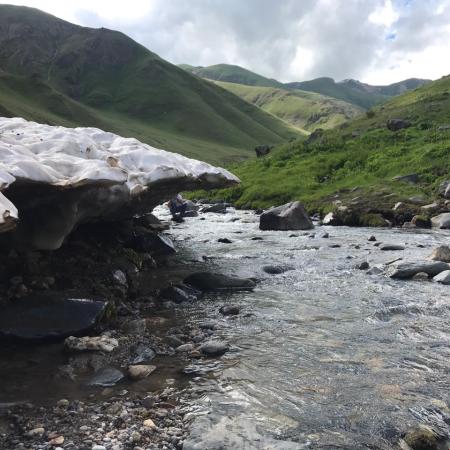
En 2017, Vardahovit, un pequeño pueblo situado en el extremo sudoriental de Armenia, donó 2.000 hectáreas de tierras comunitarias a la FPWC a perpetuidad. Este caso es muy especial, ya que desde 2016 una importante empresa minera estaba realizando trabajos de geoprospección de minerales polimetálicos en las tierras de la comunidad. La comunidad tomó la decisión participativa de rechazar la oferta financiera de la empresa para el arrendamiento de tierras y donar las tierras para su conservación a la FPWC. Hay que llevar a cabo un seguimiento de las tierras recién adquiridas, ya que forman parte del corredor de fauna salvaje. La FPWC desarrollará el turismo sostenible, la agricultura ecológica y la pequeña empresa en la comunidad, aumentando la capacidad de los lugareños y potenciando nuevas oportunidades de ingresos para los agricultores y los habitantes de la comunidad.
Otro ejemplo es Gnishik, una pequeña comunidad de la provincia de Vayots Dzor que, a pesar de las presiones para arrendar sus tierras como coto de caza a oligarcas locales, decidió donarlas a la FPWC. La comunidad posee una biodiversidad de extremo valor. Cuenta con 889 plantas, de las cuales 47 están incluidas en la lista roja. Además, la flora cuenta con 48 plantas endémicas del Cáucaso y Transcaucasia, de las cuales 16 son endémicas armenias. La fauna cuenta con 151 vertebrados y 217 invertebrados, 57 de los cuales figuran en el Libro Rojo de Armenia, como la víbora armenia, la cabra bezoar, el muflón armenio, el gato montés europeo, el leopardo del Cáucaso, la musaraña de agua transcaucásica, el murciélago de herradura, el oso pardo, etc. Es necesario llevar a cabo estudios, investigaciones y trabajos de seguimiento exhaustivos para formarse una imagen completa de la biodiversidad de la zona de Gnishik. Los alcaldes de ambas comunidades apoyan el trabajo de la FPWC y abogan por la eliminación de la caza furtiva y la conservación de la biodiversidad.

